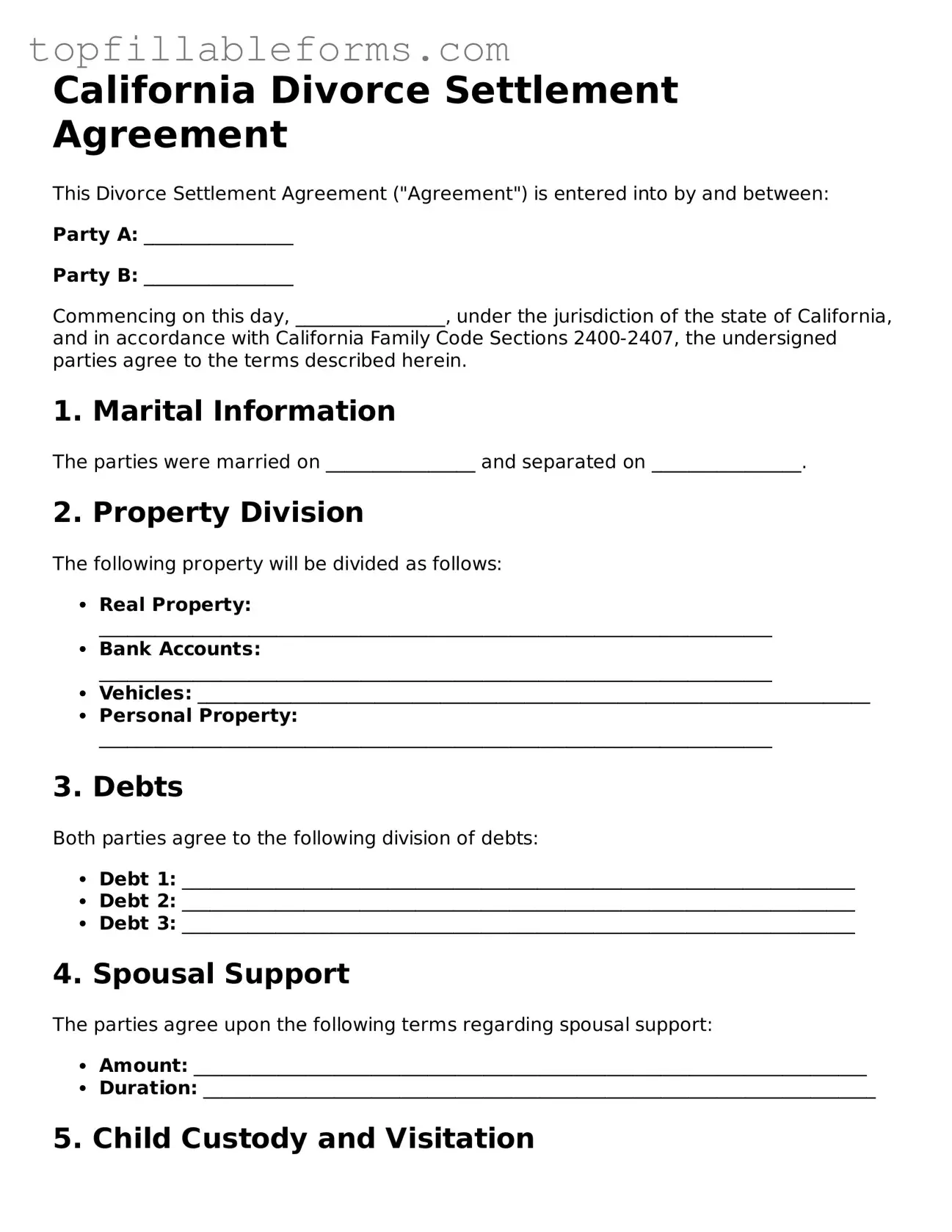California Divorce Settlement Agreement
This Divorce Settlement Agreement ("Agreement") is entered into by and between:
Party A: ________________
Party B: ________________
Commencing on this day, ________________, under the jurisdiction of the state of California, and in accordance with California Family Code Sections 2400-2407, the undersigned parties agree to the terms described herein.
1. Marital Information
The parties were married on ________________ and separated on ________________.
2. Property Division
The following property will be divided as follows:
- Real Property: ________________________________________________________________________
- Bank Accounts: ________________________________________________________________________
- Vehicles: ________________________________________________________________________
- Personal Property: ________________________________________________________________________
3. Debts
Both parties agree to the following division of debts:
- Debt 1: ________________________________________________________________________
- Debt 2: ________________________________________________________________________
- Debt 3: ________________________________________________________________________
4. Spousal Support
The parties agree upon the following terms regarding spousal support:
- Amount: ________________________________________________________________________
- Duration: ________________________________________________________________________
5. Child Custody and Visitation
If applicable, the parties agree to the custody arrangement as follows:
- Primary Custodial Parent: ________________
- Visitation Schedule: ________________________________________________________________________
6. Child Support
Child support will be provided as follows:
- Amount: ________________________________________________________________________
- Payment Schedule: ________________________________________________________________________
7. Additional Provisions
Include any additional provisions or agreements here:
____________________________________________________________________________________
____________________________________________________________________________________
8. Acknowledgment
Both parties acknowledge they have read and understood this Agreement. Each party signs this Agreement voluntarily and with the opportunity to seek independent legal counsel.
**Signature of Party A**: _________________________ Date: _______________
**Signature of Party B**: _________________________ Date: _______________
This Agreement serves as a legal document binding both parties to the terms herein, effective upon the date signed.
